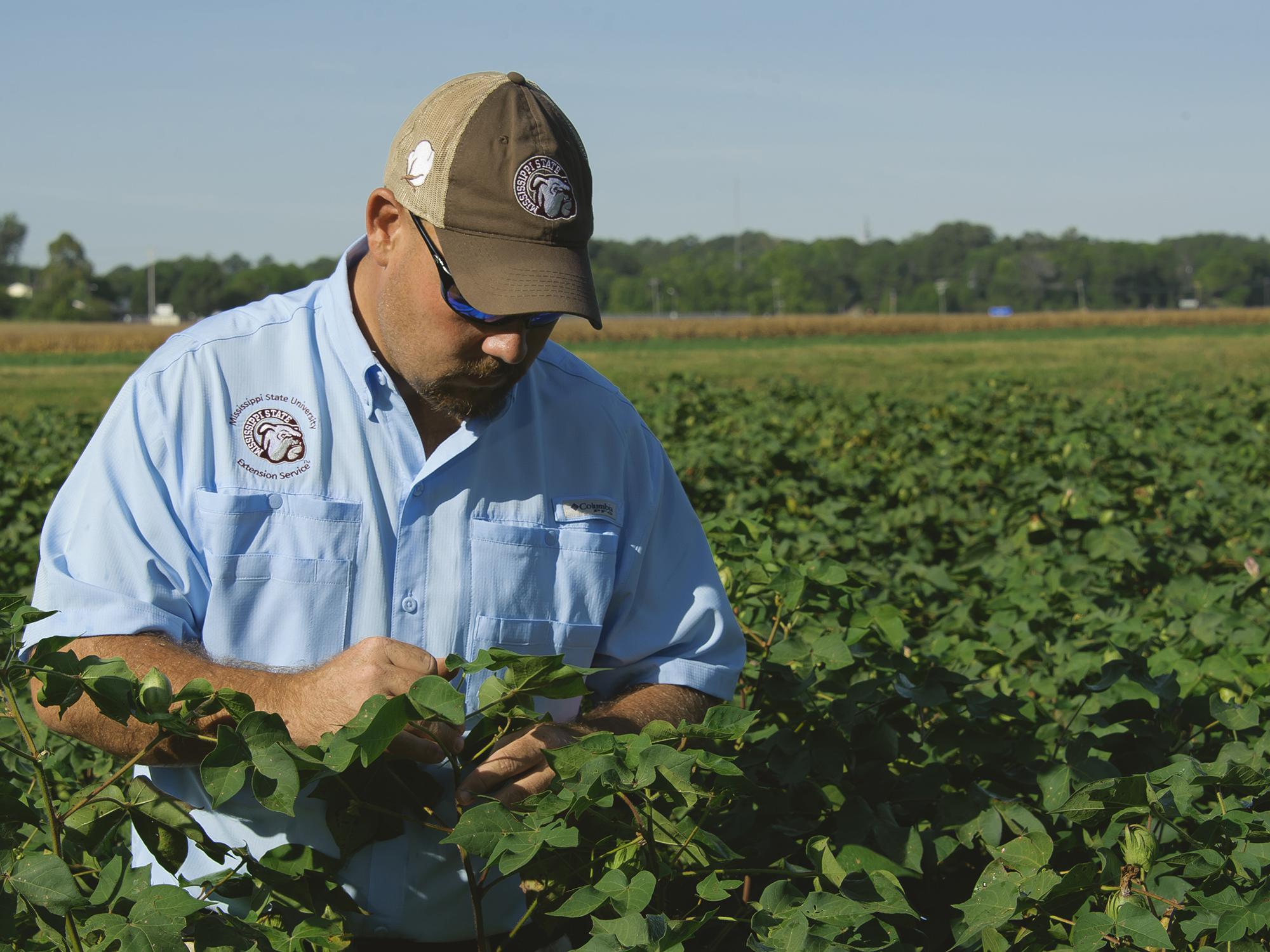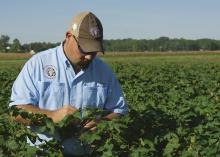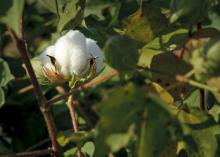Information Possibly Outdated
The information presented on this page was originally released on August 29, 2014. It may not be outdated, but please search our site for more current information. If you plan to quote or reference this information in a publication, please check with the Extension specialist or author before proceeding.
State's cotton is looking good, but price is down
MISSISSIPPI STATE -- Cotton is looking good across the state as bolls open and harvest nears, but increased cotton acreage planted across the country means lower prices on this year’s crop.
In its Aug. 24 report, the U.S. Department of Agriculture estimated 17 percent of Mississippi’s cotton is in excellent condition and 54 percent in good condition. Nearly all the rest is in fair condition, and that should lead to a good yield for the state.
Darrin Dodds, state cotton specialist with the Mississippi State University Extension Service, said the crop needs good weather to finish strong.
“I would like to see the warm weather continue for the next four weeks or so, and a good rainfall would not hurt matters in many areas where the crop is stressed,” Dodd said. “We started somewhat late, as we did in 2013, so warm weather this time of year will help mature the upper fruit on the plant.”
Despite the state’s delayed start, USDA estimated 94 percent of the cotton is setting bolls and 15 percent is already open. In recent years, 27 percent of the crop had open bolls by this point.
The open bolls give fields the snow-white look common in Mississippi in late summer. Dodds said fields are getting closer to defoliation, which aids harvest, but most have two to three weeks of maturation before reaching that point.
Insect pressure has been steady from plant bugs, worms and spider mites in places, but disease pressure has been limited.
The state has 400,000 acres of cotton, up 38 percent from what was planted in 2013. Cotton nationwide is up an estimated 9 percent over 2013 acreage.
Brian Williams, Extension agricultural economist, said this increased acreage has not helped prices.
“South Delta cotton prices and October futures are around 65 cents per pound,” Williams said. “For comparison, a year ago they were 81 cents a pound.”
These prices are near three-year lows, a consequence of expected high production nationwide, Williams said.
John Michael Riley, Extension agricultural economist, said cotton prices suffered through much of summer, but have increased 2 to 3 cents since early August.
“National yields are expected to be lower since producers are planning to harvest less productive acres in west Texas, given the improved weather in that region,” Riley said. “In terms of total production, we’re expecting an increase from last year.”
USDA is predicting yields of 1,130 pounds of cotton per acre. The state set a record of 1,229 pounds per acre in 2013.
“Last year was the best cotton crop we’ve ever seen,” Dodds said. “I am not sure if we have quite that good a crop, but I do feel that we have a good crop in the field.”
Ernie Flint, a regional Extension agronomist, works with cotton in the hills area. He said cotton is in good condition, despite a wide range of maturity.
“Cotton has really fruited well this year. There are exceptions, but not many,” Flint said. “In general, it has retained a lot of squares and is blooming out the top now.”
Defoliation should start in mid-September, and the area could use one more good rain to finish off the crop, he said.
“A lot of people discount the fact that late rains can add quite a bit to the yield of cotton, even after it begins to open at the bottom of the plant,” Flint said. “Rain can add up to 100 pounds of yield per acre, even after it’s almost ready to defoliate.”





